I propose for you today to enjoy dinner with the best braised duck legs recipe, with thyme and dried plums. If you serve it with mashed potatoes and sauerkraut, success will be guaranteed.
Table of Contents
- Preparing the Ingredients
- Let’s Make the Best Braised Duck Legs Recipe!
- Braise the Duck Legs in the Oven
- How to Serve the Duck Legs?
Usually, duck meat menus are quite rare in our families, although duck is particularly tasty. In my opinion, we should try a recipe from this poultry at least once a month.
Today I chose to make the duck in braising form, that is, in the oven and in a mixture of wine and water. You will see how tasty it will be!
This recipe is similar to roasted chicken legs in oven, which you can also find on our blog.
Preparing the Ingredients
Although this is a duck leg recipe, I bought a whole duck that I cut into pieces. I used the duck legs and breast in the recipe, and from the back and wings, I will make a delicious soup.
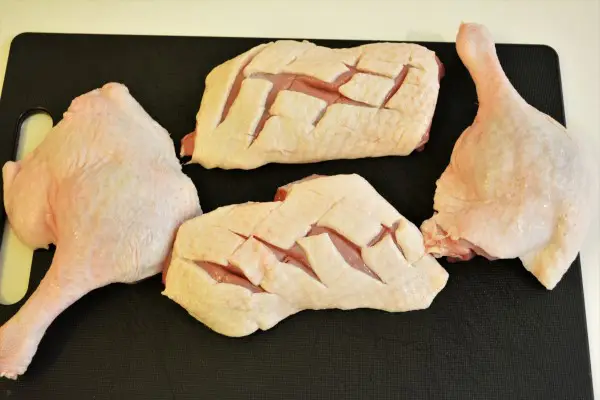
I will use a larger red onion, four cloves of garlic and about 7-8 pieces of prunes, for more flavour.
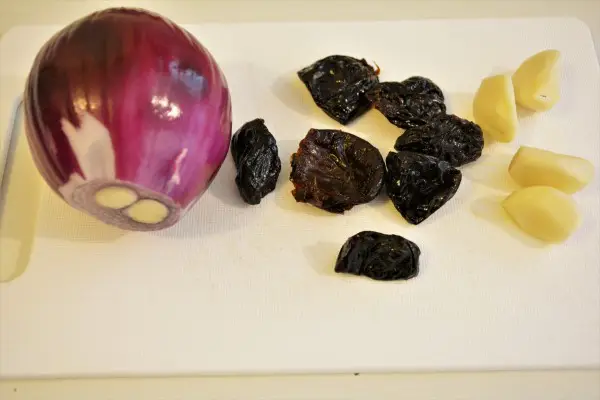
I sliced the onion into thicker slices and I crushed the garlic a little with the knife blade.
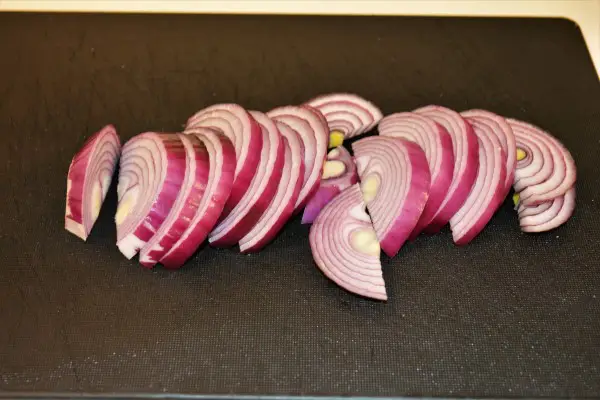
Let’s Make the Best Braised Duck Legs Recipe!
Because we will make the duck legs in the oven, we prepare a baking tray, I chose a heat-resistant glass one.
Slightly cut the duck thighs and breasts so that the fat under the skin drains more easily, season with salt and pepper and place them on the bottom of the tray.
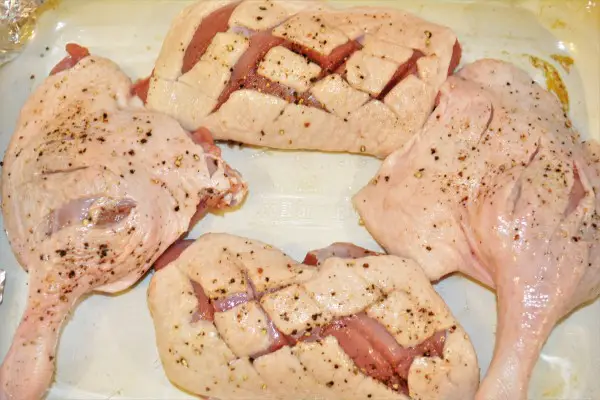
Sprinkle the prunes among them, they will give a special aroma to the sauce that will form.

We are going to place the onion slices on top and cut them a little thicker.
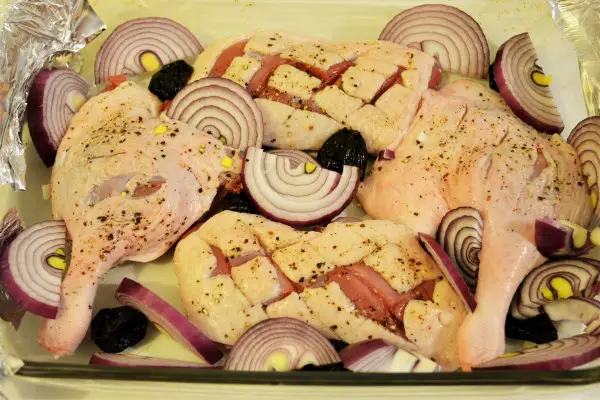
And because the duck meat matches the slightly sweet taste, I will pour a little honey on top, put the garlic cloves and season with marjoram and a few sprigs of thyme.
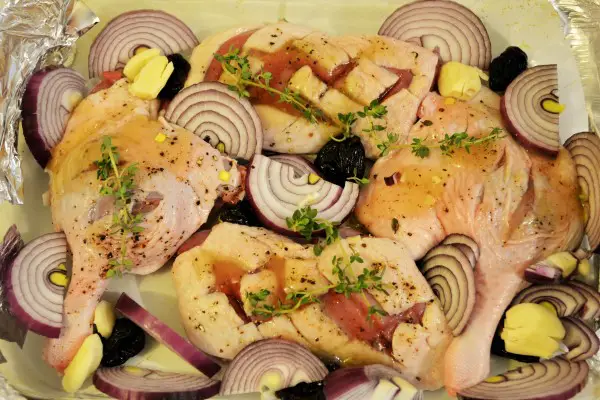
We still need some liquid in the tray, so I poured about 50 ml of rose wine, 100 ml of water and about 50 ml of sunflower oil.
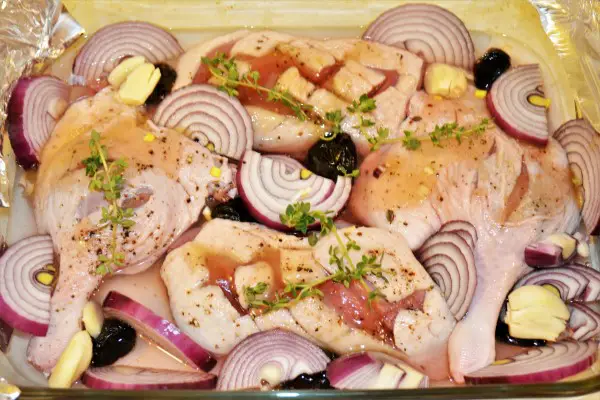
Braise the Duck Legs in the Oven
I covered the heat-resistant glass tray with aluminium foil and put it in the preheated oven at 240 degrees, about 15-20 minutes. After that, we reduce the temperature to 130 degrees and braise for another hour.
After an hour, take the foil off the tray and put it back in the oven for another 20 minutes.
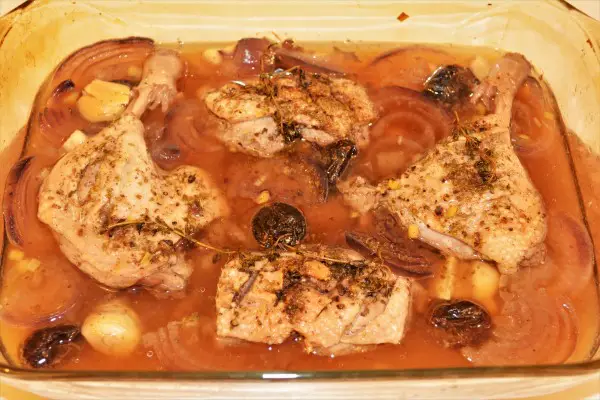
Depending on the type of oven you have, bake until the duck legs turn a golden colour.

And with that, the best braised duck legs recipe is ready to serve!
How to Serve the Duck Legs?
In Hungarian cuisine, duck legs are most often served with mashed potatoes and sauteed red cabbage. That’s how we will serve!
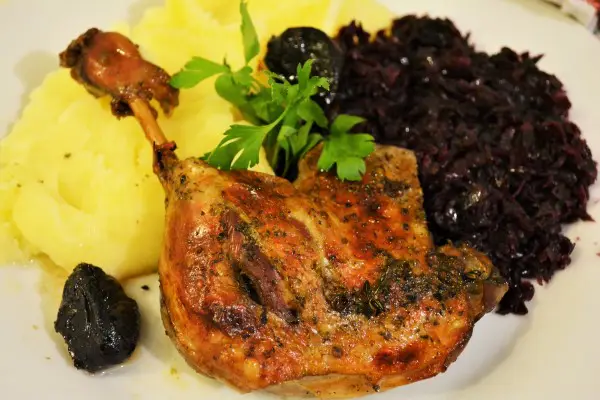
You can pour over a tablespoon of the sauce from the pan, and decorate with cooked prunes.
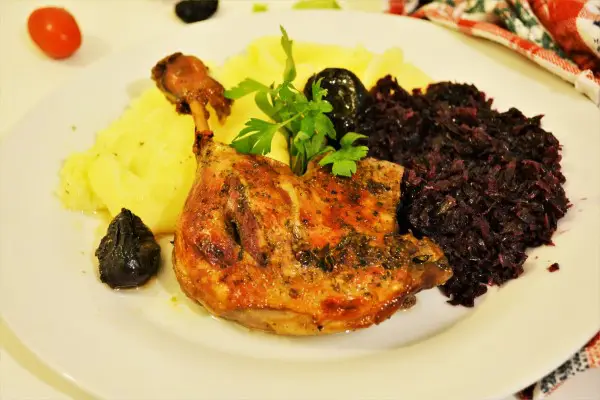
On our blog, you can also find other recipes from poultry such as:
Don’t forget to follow us on Facebook, Twitter, Instagram and Pinterest.
Best Braised Duck Legs Recipe
Ingredients
- 2 pieces duck legs
- 2 pieces duck breasts not necessary
- 1 piece red onion thicker slice
- 4 pieces garlic cloves little crushed
- 6 pieces prunes
- 2 teaspoons sea salt
- 2 teaspoons ground pepper
- 4 teaspoons honey
- 50 ml roze wine or red wine
- 100 ml water
- 3 springs thyme
- 2 teaspoons marjoram
- 3 tbsp sunflower oil
Instructions
- Slightly cut the duck thighs and breasts so that the fat under the skin drains more easily. I sliced the onion into thicker slices and I crushed the garlic a little with the knife blade.
- Season the duck legs and breasts with salt and pepper and place them on the bottom of the tray. Sprinkle the prunes among them, place the onion slices on top, pour a little honey on top, the garlic cloves and season with marjoram and a few sprigs of thyme. Pour about 50 ml of rose wine, 100 ml of water and about 50 ml of sunflower oil.
- Cover the tray with aluminium foil and put it in the preheated oven at 240 degrees, about 15-20 minutes. After that, reduce the temperature to 130 degrees and braise for another hour. After an hour, take the foil off the tray and put it back in the oven for another 20 minutes.
- Best serve is with mashed potatoes and sauteed red cabbage.

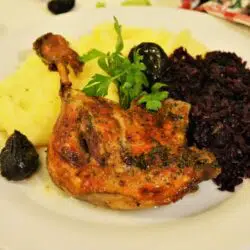
Enrique
Thursday 13th of August 2020
Hi, Timea,
Your duck recipe looks delicious! I love chicken, turkey, and duck, although the latter has more fat than the other two and we have to be careful with its consumption.
The only problem is my oven takes forever. It's an electric oven. I used to have a gas oven, but then I moved to another house and everything is electric here.
Anyway, I will try your recipe. Just one more thing, what can I use to substitute sauerkraut? Not a big fan. Any ideas?
Thanks for sharing.
Timea
Friday 14th of August 2020
Thanks, Enrique for the appreciation, if you don't like cabbage, you can replace it with some sauteed vegetables or mushrooms. Don't worry about the oven, I also have an electric oven and I'm happy with it.